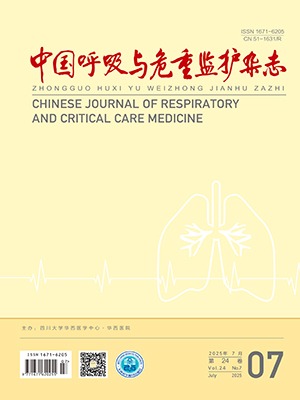Objective To explore the application effect of recumbent rehabilitation exercise combined with oscillatory positive expiratory pressure training in pulmonary rehabilitation of patients with moderate to severe inhalation injury. Methods Fifty-seven patients with moderate-to-severe inhalation injuries admitted to the Department of Burns and Plastic Surgery of the People’s Hospital of North Jiangsu Province from January 2021 to March 2023 were selected by convenience sampling. The patients were randomly divided into Group A, Group B, and Group C. Group A received conventional treatment, Group B received the recumbent rehabilitation exercise on the basis of Group A, and Group C received the concussive expiratory pressure training on the basis of Group B. The three groups were compared before and after the intervention with respect to forced expiratory volume in the first second (FEV1), forced vital capacity (FVC), sputum properties, sputum difficulty, sputum viscosity, average daily sputum output, Borg shortness of breath score, and 1-minute sitting and standing test. Results The improvement values of FEV1, FVC, sputum viscosity, average daily sputum discharge, Borg shortness of breath score, and 1-minute sit-to-stand test were compared among the three groups after intervention, and the differences were statistically significant (all P<0.05). The improvement values of Borg shortness of breath score, and 1-minute sit-to-stand test in group B were significantly better than those in group A (all P<0.05). The improvement values of FEV1, FVC, and sputum properties in group C were significantly better than those in group A (all P<0.05), Coughing difficulty, sputum viscosity, total average daily sputum expectoration, Borg shortness of breath score, and 1-minute sit-to-stand test improvement values were significantly better than those of group A (all P<0.05). Improvement values of FEV1, average daily sputum expectoration, and Borg shortness of breath score in group C were significantly better than those of group B (all P<0.05). Conclusion For pulmonary rehabilitation of patients with moderate-to-severe inhalation injuries, prone rehabilitation exercises combined with oscillatory positive expiratory pressure training can effectively improved the patients’ exercise capacity and respiratory function, and improve their quality of life.
Citation:
WANG Rong, LIAN Huibin, CHEN Hong, SUN Siping, SUN Xiuyun, GUO Xiaojuan, LU Wenting, CAO Liuzhao, YANG Aichun, WANG Qing. A study on the application of recumbent rehabilitation exercises combined with oscillatory positive expiratory pressure training in pulmonary rehabilitation of patients with moderate to severe inhalation injuries. Chinese Journal of Respiratory and Critical Care Medicine, 2024, 23(6): 400-405. doi: 10.7507/1671-6205.202401030
Copy
Copyright © the editorial department of Chinese Journal of Respiratory and Critical Care Medicine of West China Medical Publisher. All rights reserved




